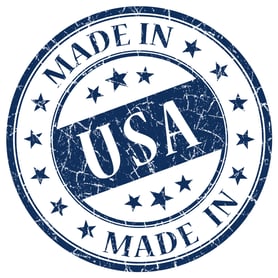 It’s been an interesting few years for the manufacturing industry in America. There have been economic worries, intense competition from foreign markets, and even a few windfalls.
It’s been an interesting few years for the manufacturing industry in America. There have been economic worries, intense competition from foreign markets, and even a few windfalls.
With the first quarter of 2015 already behind us, what are some of the big facts and events for the year so far?
Here are some interesting takeaways for the year to date in the manufacturing industry:
Fact #1: Manufacturing Jobs are on the Rise for the Fifth Consecutive Year
After hitting a low point in 2010, manufacturing jobs have been steadily increasing in the U.S. year over year, according to reports on the Bureau of Labor Statistic’s website. While the offshoring of manufacturing jobs to China and other countries had started well before this time, the combination of the recession and the offshoring of labor hit the industry hard during this time.
However, from the low point in 2010, the manufacturing industry has been steadily adding jobs year over year. There are many factors that contribute to this, such as the rising cost of labor in overseas markets, which is eliminating the old “cheap labor” argument for offshoring production.
Another factor that might be contributing to the reshoring of American manufacturing jobs is:
Fact #2: A Worker in the U.S. has 10 to 12 Times the Output of a Chinese Worker
 Wise manufacturers look at more than the cost of labor, they look at the return on investment for their labor dollar. As reported in a Forbes.com article, “a worker in the U.S. is associated with 10 to 12 times the output of a Chinese worker.” That’s a pretty significant difference in productivity for the time.
Wise manufacturers look at more than the cost of labor, they look at the return on investment for their labor dollar. As reported in a Forbes.com article, “a worker in the U.S. is associated with 10 to 12 times the output of a Chinese worker.” That’s a pretty significant difference in productivity for the time.
The primary reasons for this include higher investments in:
- Factory Automation
- Information Technology
- Education
These investments make it easier for workers to get more done in their work day with better results per product.
For example, factory automation removes the element of human error from repetitious tasks, and is often much faster than manual labor methods. One wire bending robot can make dozens of bends in wire forms per minute, where a manual laborer might be able to complete one or two bends in the same time frame.
So, even if an American employee makes 5 times as much money as the Chinese laborer, the manufacturer is still getting twice as much return on their investment per dollar spent overall.
While this advantage won’t last forever, as foreign nations such as China are beginning to invest more in factory automation, it is a shot in the arm for the U.S. manufacturing industry. So, although the U.S. has the productivity advantage per worker, now is not the time to get complacent.
Fact #3: Energy Prices Have Plummeted
As reported by the International Business Times at the start of 2015, “Oil prices have dropped more than 50 percent since mid-2014.” Much of this reduction in price can be attributed to an increase in domestic oil production, which is also drawing up extra natural gas with the oil.
This surplus of fuel has led to a modest reduction in energy costs for some manufacturers, but the reduction in the cost of oil hasn’t been good news for all manufacturers. As cited in the IBT article, the United States Steel Corporation from Pittsburgh “has suddenly lost a great deal of business because of the recent downturn in the oil industry.”
Overall, though, the reduction in oil prices is a positive, as it frees up consumer funds for purchases and lowers the electric bills for many manufacturers.
The Manufacturing Industry’s GDP is Continuing to Grow Year Over Year
In 2009, the manufacturing industry’s GDP took a pretty serious hit. According to the Bureau of Economic Analysis’ (BEA’s) table of yearly gross economic output by industry, the GDP of the manufacturing industry fell to 4469.3 billion dollars in 2009, down almost 18% from the previous year.
However, since that low point in 2009, the manufacturing industry’s GDP has steadily increased every year, growing to 6143.6 billion dollars by the end of 2014, which is higher than it was before the drop in 2009.
Despite Improving Economy, Manufacturing Business Owners Still Dissatisfied with Washington Policies
While jobs, GDP, and investments in the manufacturing industry are growing, there is one statistic that industry outsiders might find surprising: according to a survey by Industry Week and the NAM, “manufacturers continue to express frustrations with the political environment. In fact, 73.6% of those taking the survey said that the United States was on the wrong track.”
Why the frustration with Washington?
One possible reason might be the steady stream of business-complicating legislation. For example, the Industry Week article cites health care legislation as “the top concern by 69.4% of those taking the survey. In the manufacturing sector, businesses see benefit costs rising an average of 5.3% over the next 12 months.”
Increasing costs that come from legislative measures make it harder for businesses to stay profitable, add jobs, and grow business.
To keep the manufacturing renaissance going, manufacturers need to work together to make sure that the policymakers on Capitol Hill know how their decisions are impacting businesses across America, and the millions of American workers who are either directly employed by the manufacturing industry or whose jobs indirectly depend on manufacturers.
Check out how you can improve your manufacturing process and be a bigger part of this amazing industry by choosing the right custom metal basket in the free guide at the link below:



.gif)


